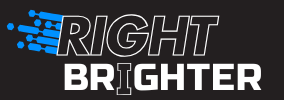Just as earlier people needed a third-party lender to buy any valuable or high-ticket item, the concept of in house financing is making this process easier. Today’s new businesses provide direct financing to their customers. What this does is that the work of a third-party lender is completely eliminated as in-house financing allows users to finance directly from the supplier. In this article, we will explain in detail about in house financing and we’ll Understand it’s all aspects.
Table of Contents
Understanding Financing
When some people go to buy something expensive, they do not have enough money to buy it. Then they borrow from a third party the amount of money they lack to buy the thing. This is the whole work of financing. In most cases, the role of the third party is played by a bank or lender, which is a safe way to borrow money. But banks have some conditions, which if you agree to and sign a contract with them, then only they give you the money. In which you have to pay some percent interest on the amount borrowed and there is a deadline to return the money, which the banks set at their discretion.
What is in house Financing?
In some cases, the person selling the item does the financing themselves. This is called in house financing. For example, there is a huge car showroom in your city and you go there to buy a car and your budget is $14,000. But after talking to them, you find out that the car you like costs $20,000 and you are $6,000 short. In this case, the person selling the car to you tells you that he will give you the amount you are short on instead of you borrowing money from another lender. This keeps the deal between only two people and eliminates the involvement of a third party, which reduces confusion to a great extent.
Some points to remember about in house financing
Let’s know some of the features of in-house financing that make it better than normal financing.
- It is implemented when the retailer itself lends the customer some money based on their needs to purchase their products.
- This also has the advantage of eliminating the intervention of a third-party lender or bank, as the lender agrees to lend to the buyer himself.
- The approval process for taking out a loan is usually easier because the retailer itself is playing the financing role here.
- The industry in which in-house financing is used the most is the automobile industry, which is why this industry is growing rapidly.
What are the industries in which in house financing is used the most?
Automobile
Since the car sales sector depends on customers obtaining auto loans to complete the buying process of a vehicle, it is a major user of in-house finance. Additionally, auto dealers have the advantage of establishing their own underwriting guidelines, which can allow for a larger pool of consumers by taking people with lower credit scores. These lending platforms frequently approve applicants who might be rejected for a loan by banks or other types of financial organizations.
Medical industry
Because of the treatments involved, health insurance companies might refuse to pay some medical and orthodontic costs. Cosmetic dentistry and plastic surgery are examples of elective procedures. The provider might give in house financing if the customer is unable to pay the expenses up front. Similar to vehicle dealers, these companies providing services can offer their customers their own financing arrangements, which may increase the likelihood that they will use them again in the future.
Retailers
Large businesses, particularly big-box stores that sell more costly goods like furniture, appliances, major gadgets, and building supplies, sometimes use in house financing. Loans and in-store credit cards, which are exclusively available at that retailer, are two examples of financing solutions. The largest retailers that provide this kind of financing are Ashley Furniture HomeStore, Apple, Lowe’s, and Home Depot. Retailers can maintain client loyalty by offering an opportunity for financing purchases internally.
Pros and Cons of in house financing?
Pros
- Credit Requirements: One of the reasons it is better than banks and other lenders is that it offers more lenient credit requirements than them.
- Simplification: As you know, there is no third-party lender involved in this, so the process is not lengthy, and the paperwork and loan approval process is also done safely and quickly.
- Repayment with ease: There are also some companies that give you the opportunity to choose when you want to repay the borrowed money.
- Availaibility: Financing facilities are provided to almost every type of client.
Cons
- High interest: Its interest rates may be higher than those of banks and other lenders.
- Not so flexible: The decision on when to repay the loan will be solely with the companies.
- Availability: Not every business supports the concept of in-house financing.
- Risk: Not everyone does this, but some companies give money temporarily and then later add some charges from unknown sources.
Conclusion:
Through easier and more rapid point-of-sale (POS) credit platforms, many borrowers now have additional in-house financing choices thanks to the rise of innovative financial technology (fintech) companies. At the point of sale finance technology can be developed around an organization’s internal credit department or is typically made easier when an organization collaborates with just one credit supplier to meet the financing needs of its clients.

